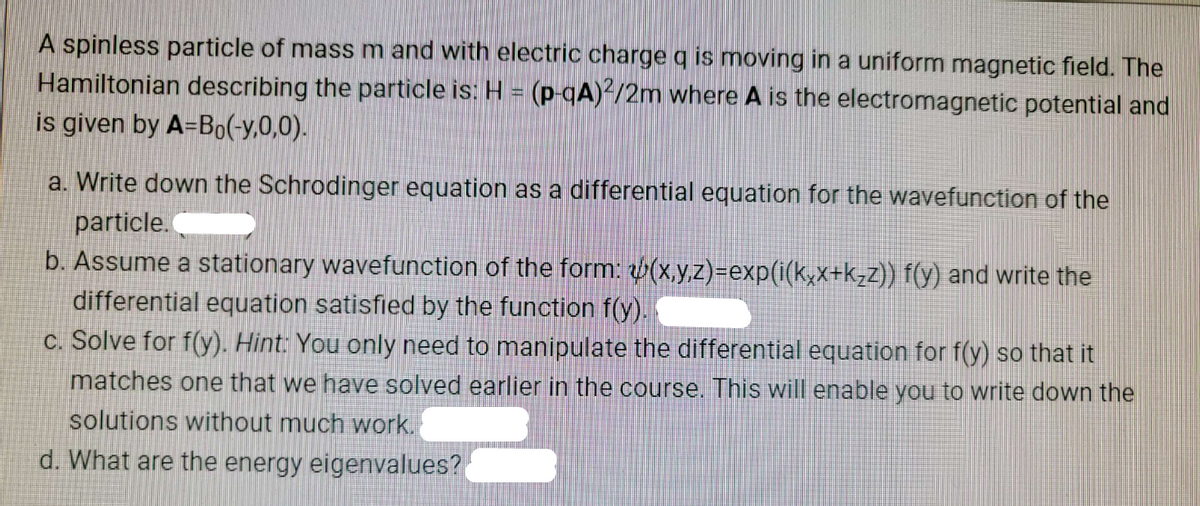A spinless particle of mass m and with electric charge q is moving in a uniform magnetic field. The Hamiltonian describing the particle is: H = (p-qA)2/2m where A is the electromagnetic potential and is given by A-Bo(-y,0,0). a. Write down the Schrodinger equation as a differential equation for the wavefunction of the particle. b. Assume a stationary wavefunction of the form: (x,y,z)=exp(i(kxx+k₂z)) f(y) and write the differential equation satisfied by the function f(y). c. Solve for f(y). Hint: You only need to manipulate the differential equation for f(y) so that it matches one that we have solved earlier in the course. This will enable you to write down the solutions without much work. d. What are the energy eigenvalues?
A spinless particle of mass m and with electric charge q is moving in a uniform magnetic field. The Hamiltonian describing the particle is: H = (p-qA)2/2m where A is the electromagnetic potential and is given by A-Bo(-y,0,0). a. Write down the Schrodinger equation as a differential equation for the wavefunction of the particle. b. Assume a stationary wavefunction of the form: (x,y,z)=exp(i(kxx+k₂z)) f(y) and write the differential equation satisfied by the function f(y). c. Solve for f(y). Hint: You only need to manipulate the differential equation for f(y) so that it matches one that we have solved earlier in the course. This will enable you to write down the solutions without much work. d. What are the energy eigenvalues?
Related questions
Question

Transcribed Image Text:A spinless particle of mass m and with electric charge q is moving in a uniform magnetic field. The
Hamiltonian describing the particle is: H = (p-qA)2/2m where A is the electromagnetic potential and
is given by A-Bo(-y,0,0).
a. Write down the Schrodinger equation as a differential equation for the wavefunction of the
particle.
b. Assume a stationary wavefunction of the form: (x,y,z)=exp(i(kxx+k₂z)) f(y) and write the
differential equation satisfied by the function f(y).
c. Solve for f(y). Hint: You only need to manipulate the differential equation for f(y) so that it
matches one that we have solved earlier in the course. This will enable you to write down the
solutions without much work.
d. What are the energy eigenvalues?
Expert Solution
This question has been solved!
Explore an expertly crafted, step-by-step solution for a thorough understanding of key concepts.
This is a popular solution!
Trending now
This is a popular solution!
Step by step
Solved in 4 steps with 6 images
